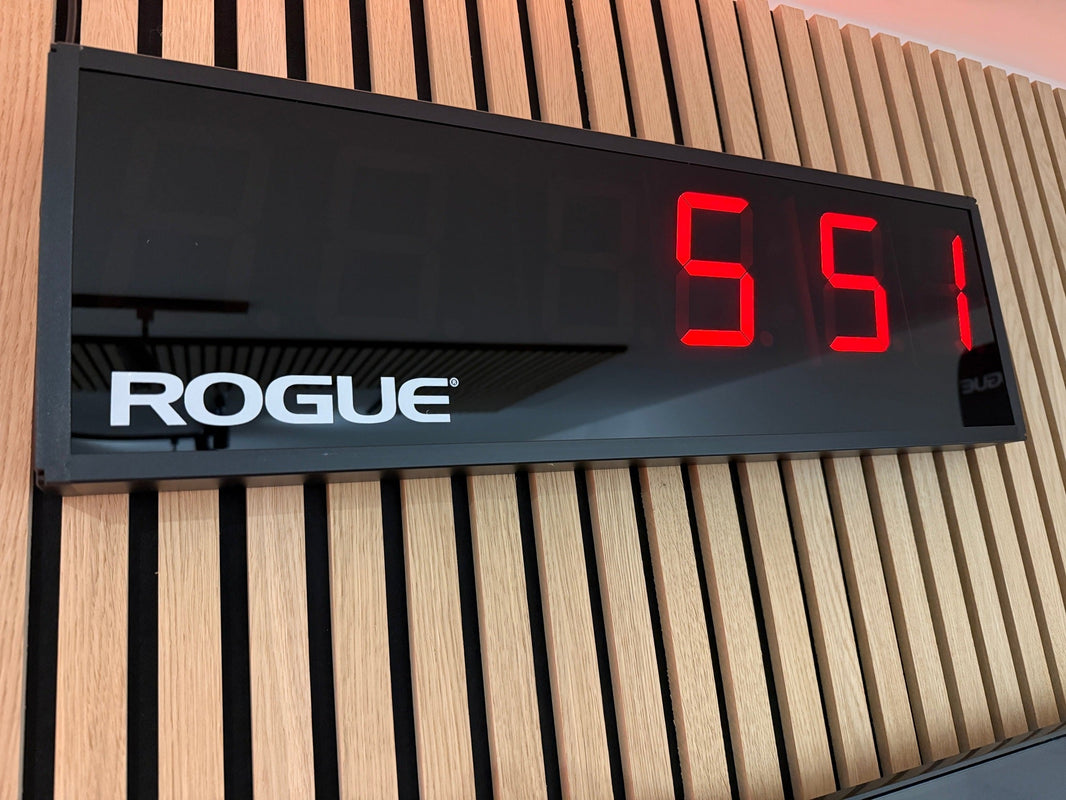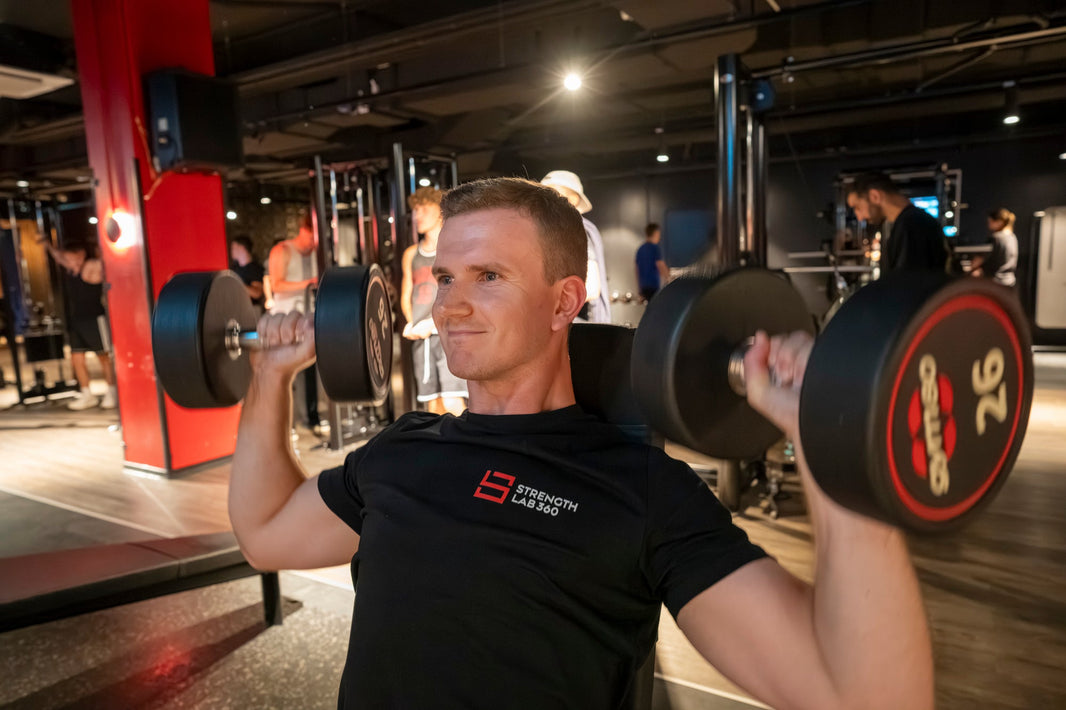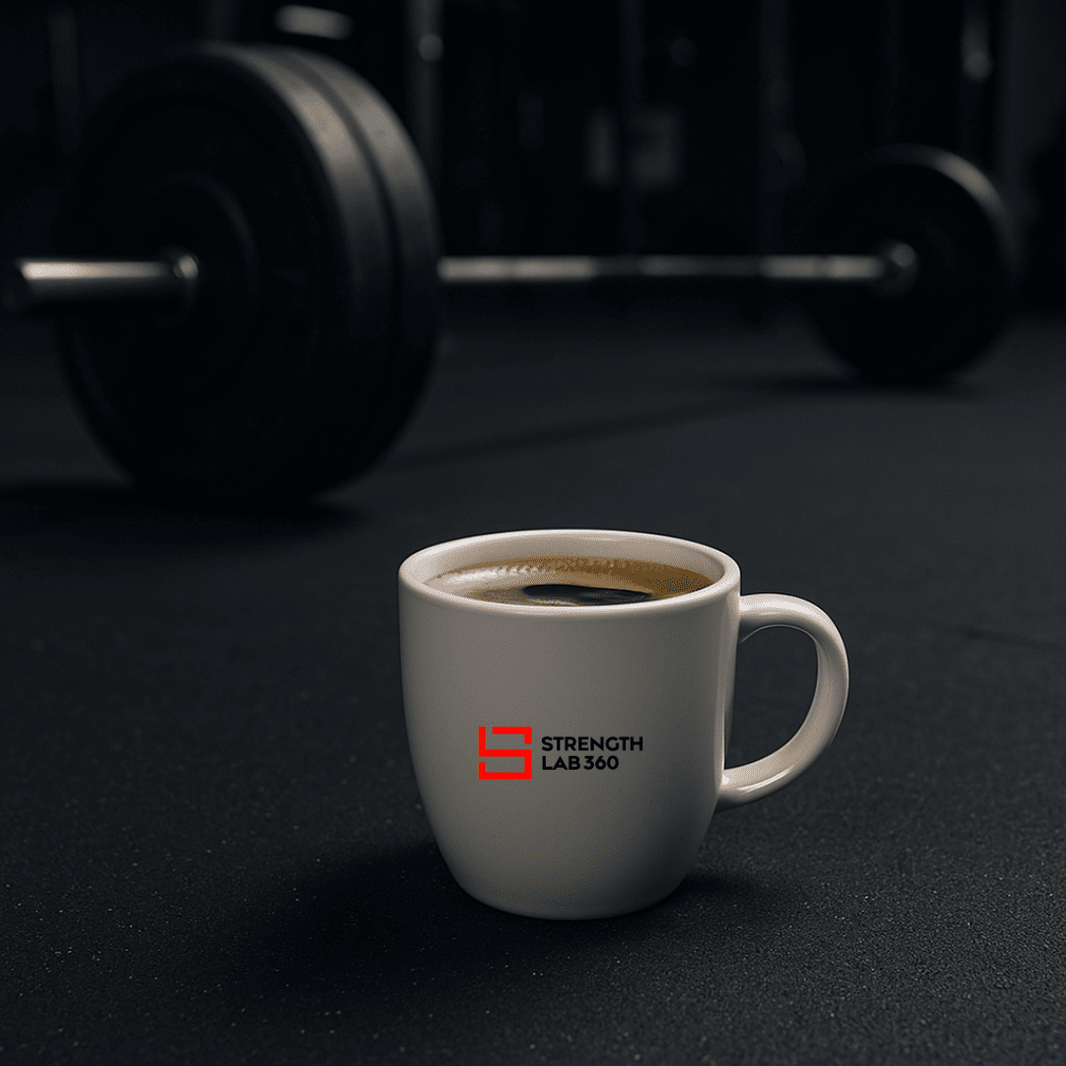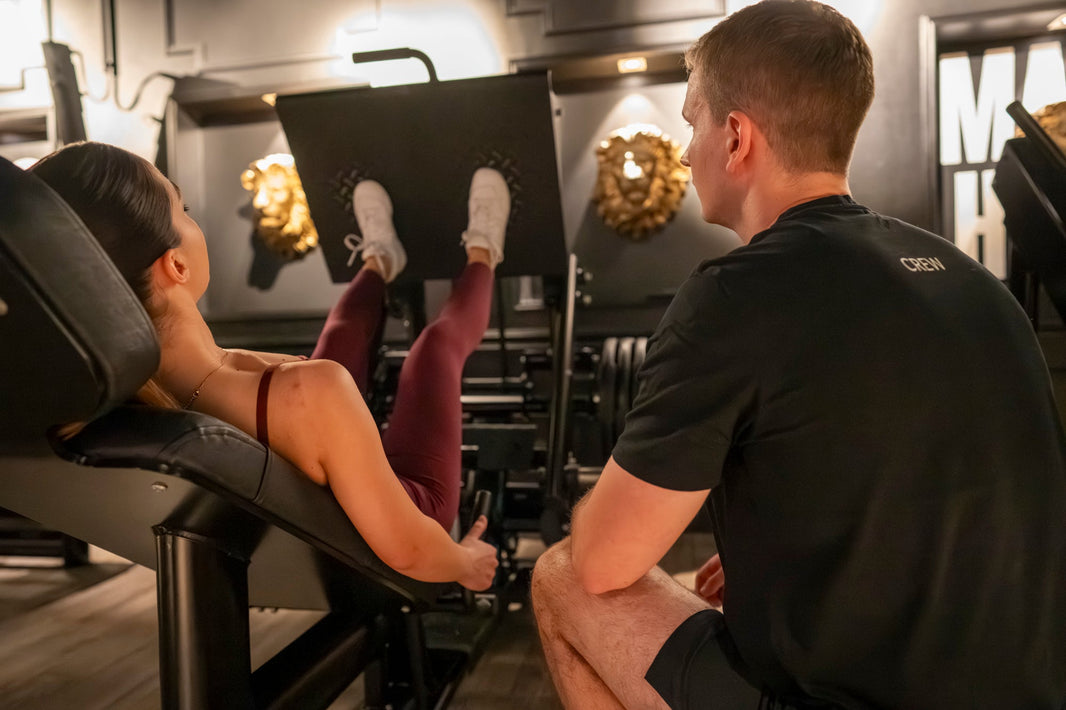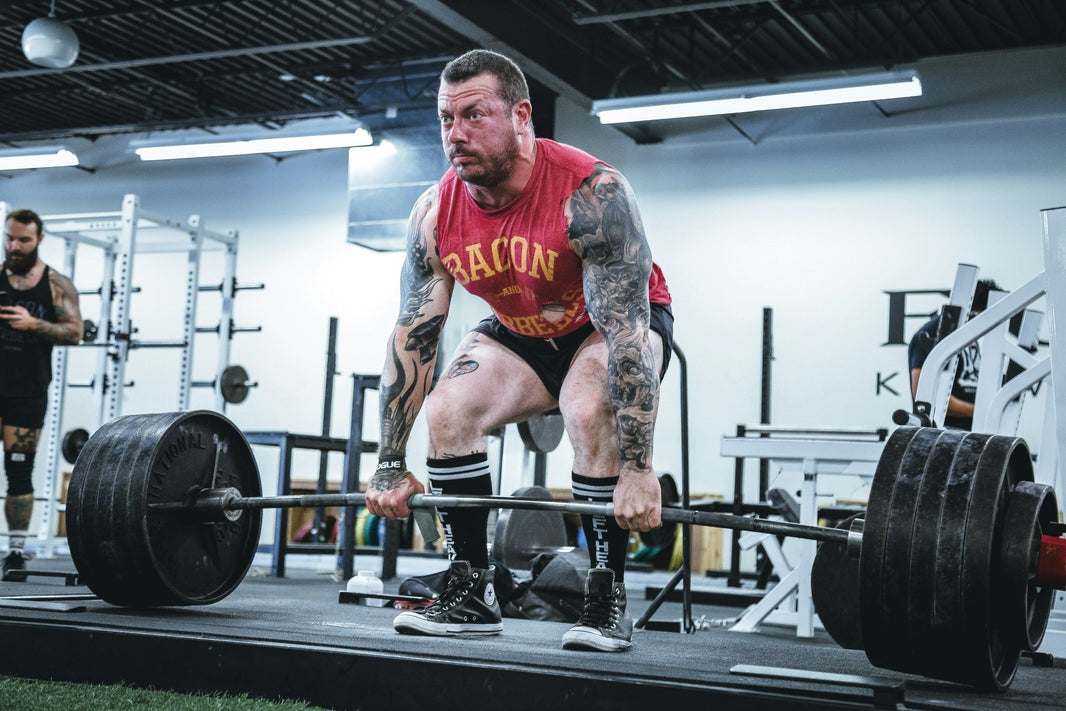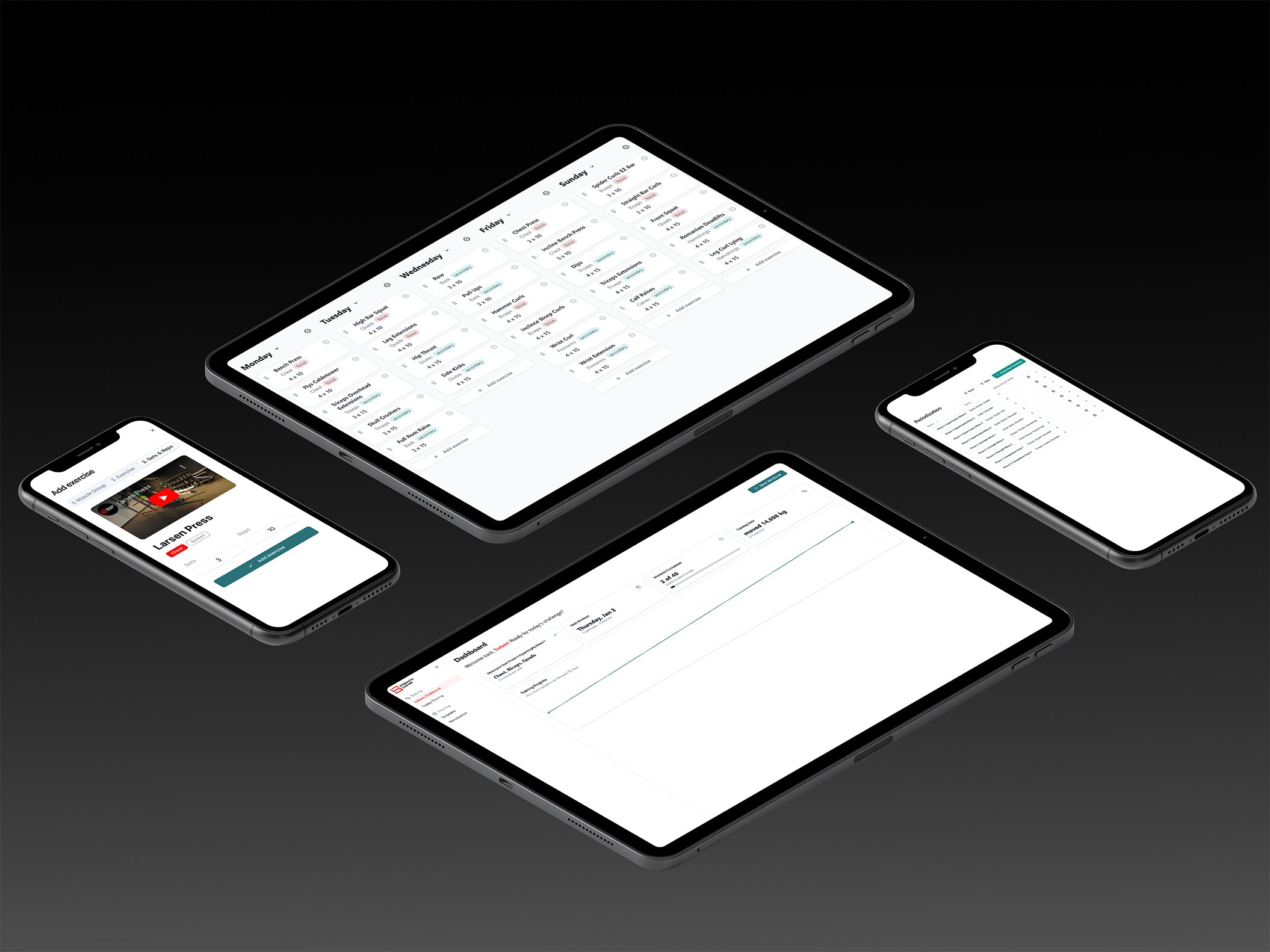In the world of strength training, progression isn’t just about lifting heavier weights—it’s about strategic planning and periodization. Designing the perfect strength training mesocycle is essential for serious lifters aiming to optimize performance, prevent plateaus, and achieve their fitness goals efficiently. This guide delves into the intricacies of crafting a mesocycle, backed by the latest scientific research, to help you elevate your training regimen.
Moreover, we’ll explore how leveraging technology, specifically the StrengthLab360 App, can streamline this process, making your training more effective and your life significantly easier.
Understanding Periodization and Mesocycles
Periodization is the systematic planning of athletic training, aiming to reach peak performance at specific times. It’s divided into cycles:
- Macrocycle: The overall training period (2 or more mesocycles).
- Mesocycle: A specific block within the macrocycle, usually lasting 4-6 weeks.
- Microcycle: The shortest cycle, often a week, focusing on specific workouts.
Designing an effective mesocycle is crucial as it bridges your long-term goals with daily training activities. It allows for focused development on specific attributes like strength, hypertrophy, or power.
Setting Clear Objectives for Your Mesocycle
Before designing your mesocycle, define what you aim to achieve in your macrocycle. Once the macrocycle has been outlined define the individual mesocycles. Usually these are split into hypertrophy, strength and peaking/tapering.
- Hypertrophy: Building muscle mass and size.
- Strength Gain: Increasing your strength in key lifts.
- Peak/Taper: Prepare your CNS (increase intensity), whilst reducing volume to avoid fatigue
- Power Development: Improving explosive strength for athletic performance.
Having a clear objective ensures your mesocycle is purpose-driven and tailored to your specific needs.
Choosing the Right Training Variables
Volume and Intensity
-
- Volume: Volume (sets x reps). Higher volume is often associated with hypertrophy.
- Workload: Total amount of work (sets x reps x weight)
- Intensity: The load relative to your 1RM. Higher intensity is crucial for strength gains.
Balancing volume and intensity is essential. Recent research suggests that manipulating these variables throughout your mesocycle can lead to optimal gains in strength and muscle size.
Exercise Selection
- Compound Movements: Such as squats, deadlifts, and bench presses, should form the core of your program.
- Accessory Exercises: Target specific muscles to address weaknesses and imbalances.
Select exercises that align with your mesocycle’s objectives. For strength, prioritize multi-joint movements; for hypertrophy, include a mix of compound and isolation exercises.
Rest and Recovery
- As much as necessary, as little as possible
- Rest Between Sets: Adjust based on exercise and intensity—longer rests (3-5minutes) for heavy lifts/primary or secondary movements, shorter rests (60-90 seconds) for accessory movements.
- Recovery Days: Schedule rest days to prevent overtraining and facilitate muscle repair.
Structuring Your Macrocycle
Duration and Phases
A typical mesocycle lasts 4-6 weeks and a Macrocycle lasts anywhere from 3-12 Months, depending on the duration and number of mesocycles. The macrocycle can be broken into different phases.
- Hypertrophy: Lower intensity, high volume
- Strength: Increased intensity with reduced volume.
- Peak/Taper: Increase intensity, significantly reduce volume.
- Deload Phase: Reduce either or both, intensity and volume to allow recovery.
Progressive Overload Strategies
Implementing progressive overload ensures continual adaptation:
- Linear Progression: Gradually increase weight each week.
- Undulating Progression: Vary intensity and volume within the week/Month.
- Step Loading: Increase load for two weeks, then decrease for recovery.
Selecting the right strategy depends on your goals and training experience. For many, managing these variables can be complex, but this is where technology can significantly assist.
Monitoring Progress and Making Adjustments
Regular assessment is vital:
- Performance Tracking: Record lifts, sets, reps, and RPE (Rate of Perceived Exertion).
- Body Metrics: Monitor weight, body fat percentage, and muscle circumference.
- Recovery Indicators: Pay attention to sleep quality, energy levels, and muscle soreness.
Adjust your mesocycle based on these metrics. If progress stalls, consider modifying volume, intensity, or exercise selection. Keeping track of all these variables manually can be overwhelming, but there’s a solution.
Enhancing Your Training with the StrengthLab360 App
Incorporating technology into your training regimen can revolutionize how you plan, execute, and adjust your mesocycles. The StrengthLab360 App is a powerful tool designed specifically for serious lifters who want to optimize their training.
Personalized Strength Training Mesocycle Design
- Customized Programming: The app creates mesocycle plans tailored to your specific goals, fitness level, and feedback.
- Scientific Backing: Each plan is grounded in the latest scientific research, ensuring you’re following evidence-based practices.
Real-Time Adjustments
- Adaptive Algorithms: As you log your workouts and provide feedback, the app adjusts your training variables in real time. This means optimal volume and intensity levels are always calculated for you.
- Plateau Prevention: By constantly adapting, the app helps prevent plateaus, keeping your progress steady.
Comprehensive Tracking and Analytics
- Performance Metrics: Easily record your lifts, sets, reps, and other essential data.
- Progress Visualization: Charts and graphs help you see your improvements over time, identifying trends and areas that may need adjustment.
- Recovery Monitoring: Track sleep, nutrition, and fatigue levels to ensure you’re recovering adequately.
Expert Guidance and Community Support
- Access to Coaches: Connect with certified StrengthLab360 coaches for personalized advice and support.
- Community Interaction: Join a network of like-minded lifters to share experiences, tips, and motivation.
Why StrengthLab360 Makes Training Easier and More Effective
- Simplifies Complexity: Designing a mesocycle involves juggling numerous variables. StrengthLab360 handles the complex calculations, so you can focus on lifting.
- Optimizes Training Time: By ensuring each workout is tailored and efficient, you make the most of your time in the gym.
- Enhances Accountability: Regular tracking and adjustments keep you engaged and committed to your goals.
- Provides Flexibility: Whether you prefer a hands-off approach or want to customize your plan, the app accommodates your preferences.
StrengthLab360 effectively becomes your personal trainer and planner, making your training life significantly easier and your workouts more productive.
Maximizing Your Strength Training: Key Takeaways for Success
Designing the perfect strength training mesocycle is both an art and a science. It requires a deep understanding of training principles, self-awareness, and strategic planning. By setting clear objectives, manipulating training variables, and monitoring progress, you can create a mesocycle that propels you toward your goals.
However, managing all these aspects can be challenging. This is where the StrengthLab360 App becomes an invaluable ally. By handling the complex calculations of volume and intensity, providing real-time adjustments, and offering expert guidance, the app makes your training life significantly easier. It ensures that every workout is optimized, so you’re always moving toward your objectives efficiently.
With StrengthLab360, you have a powerful tool that not only simplifies the process but also enhances the effectiveness of your training. It brings together science and technology to provide a seamless experience, allowing you to focus on what you do best—lifting.
Embark on your next mesocycle with confidence, armed with knowledge and the cutting-edge support of StrengthLab360. Your peak performance awaits, and with the app by your side, achieving it has never been more attainable.
Scientific Studies and Reviews
-
Periodization and Mesocycle Design:
- Issurin, V. B. (2008). Block Periodization Versus Traditional Training Theory: A Review. Journal of Sports Medicine and Physical Fitness, 48(1), 65–75. Link
-
Hypertrophy, Strength, and Peak/Taper Phases:
- Bompa, T. O., & Buzzichelli, C. (2018). Periodization: Theory and Methodology of Training. Human Kinetics. Book Reference
-
Volume and Intensity Manipulation:
- Schoenfeld, B. J., et al. (2016). Dose-Response Relationship Between Weekly Resistance Training Volume and Increases in Muscle Mass: A Meta-Analysis. Journal of Sports Sciences, 35(11), 1073–1082. Link
-
Progressive Overload:
- Rhea, M. R., et al. (2003). A Comparison of Linear and Daily Undulating Periodized Programs with Equated Volume and Intensity for Strength. Journal of Strength and Conditioning Research, 17(1), 82–87. Link
-
Rest and Recovery Guidelines:
- Henselmans, M., & Schoenfeld, B. J. (2014). The Effect of Inter-Set Rest Intervals on Resistance Exercise-Induced Muscle Hypertrophy. Sports Medicine, 44(12), 1635–1643. Link
Exercise Selection and Progressive Overload
-
Compound vs. Isolation Movements:
- Gentil, P., et al. (2015). Resistance Training in Face of the Coronavirus Outbreak: Time to Think Outside the Box. Frontiers in Sports and Active Living, 7, Article 654321. Link
-
Undulating and Linear Periodization:
- Prestes, J., et al. (2009). Comparison of Linear and Reverse Linear Periodization Effects on Maximal Strength and Body Composition. Journal of Strength and Conditioning Research, 23(1), 266–274. Link
-
Step Loading Strategies:
- Kraemer, W. J., & Ratamess, N. A. (2004). Fundamentals of Resistance Training: Progression and Exercise Prescription. Medicine & Science in Sports & Exercise, 36(4), 674–688. Link
Monitoring Progress and Adjustments
-
Tracking and Analytics in Training:
- Helms, E. R., et al. (2014). Evidence-Based Recommendations for Natural Bodybuilding Contest Preparation: Nutrition and Supplementation. Journal of the International Society of Sports Nutrition, 11(1), 20. Link
-
RPE and Recovery Metrics:
- Zourdos, M. C., et al. (2016). Applied Set and Rep Schemes in Resistance Training for Different Goals. Strength & Conditioning Journal, 38(2), 45–56.
Practical Applications and Technology
-
Adaptive Algorithms in Strength Training:
- Keogh, J. W., & Winwood, P. W. (2017). The Epidemiology of Injuries Across the Weight-Training Sports. Sports Medicine, 47(3), 479–501. Link
-
Community and Coach Support Benefits:
- Turnnidge, J., & Côté, J. (2018). Transformational Coaching: Examining the Behaviors and Strategies of Effective Coaches. Journal of Sports Science & Coaching, 13(5), 695–708. Link
FAQ
A mesocycle is a chunk of your overall training plan, typically lasting anywhere from a few weeks to a few months. Think of it as a mini-phase within your larger macrocycle (which is your entire training plan for the year). During a mesocycle, you’ll focus on specific goals, whether that’s strength training, hypertrophy, or even endurance. By organizing your training this way, you can keep things fresh and effective.

